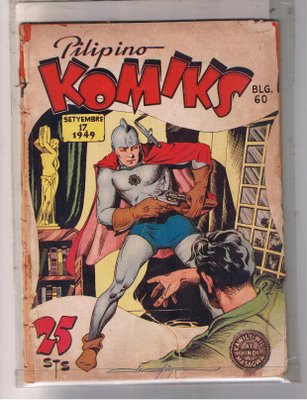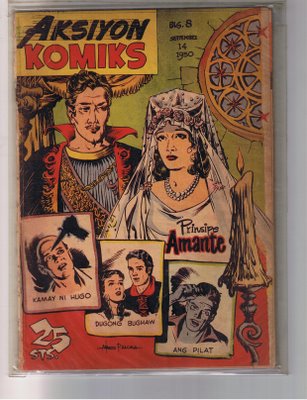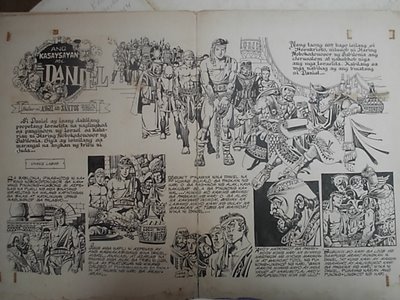I was deeply disappointed by their Darna tele-version, and I pre-judged that now, GMA-7 will not be able to come up with even a satisfactory rendition of Mars Ravelo's most famous superhero.
I was watching 24 Oras, dozed off a little during Pia Guano's report on Kapuso stars ( plus Mike Enriquez' overacting intro of her) , I was awakened to find myself already watching Captain Barbell. Well, since I'm very comfortable lying on my sofa, why not give it a chance and perhaps see just what GMA-7 has stored for the first episode.
Frankly and honestly, I am very impressed with the first showing. It is fast-paced and superbly edited. But the real strength lies on its special effects. It is not unexpected though, as GMA-7 had repeatedly boasted that they really poured big money towards the production. It is also a strategy to make a big first impression so that the viewers will be sure to come back each evening.
Superman Copy
It is only deplorable that GMA7's Captain Barbell deviated from its original storyline, even though it claimed it is Mars Ravelos' Captain Barbell. Plotwise, there is little similarity to the original Captain Barbell who first debuted in Pinoy Komiks in 1963.

The original Captain Barbell first appeared in Pinoy Komiks in 1963. Written by the great Mars Ravelo, this series was illustrated by Jim Fernandez.
The plot is obviously copied from Smallville, with all the familiar scenes like a spaceship crashing to Earth, with a farm couple rescuing a small boy inside who would be the future Captain Barbell, plus the boy showing feats of unusual power like lifting a tractor and a tree.
But perhaps the most embarrasing copy is the introduction of the Askobar (Asidong Kontra Barbarium), which is of course, an imitation of Superman's Krypton. Like the Krypton, the Askobar is also a crystalline substance and has the power to make Captain Barbell weak. The most ridiculous part is the fact that the General (more or less a copy or Lex Luthor), can defeat Captain Barbell just by holding a piece of krypton in his hand and showing it in the superhero's face, like saying "in your face, Captain Barbell!"
Perhaps it would have been more slightly original if Commander X( the loyal lieutenant of the General) was given a battle suit made up of Askobar to counter the Barbarium suit worn by Captain Barbell.
Generally, though, with all its faults, I liked the first showing of Captain Barbell. I must admit I enjoyed watching it, and has exceeded my expectations, although I just felt a little uneasy with Snooky's wig; it seemed to be always falling from her head.
I congratulate GMA-7 for resurrecting one of Pinoy Komiks most popular superheroes, and I intend to watch it now every evening.

I just love Pinoy Komiks!










